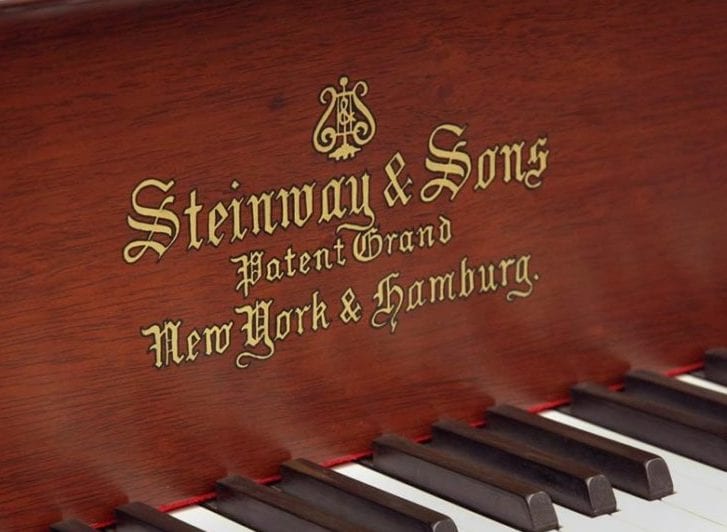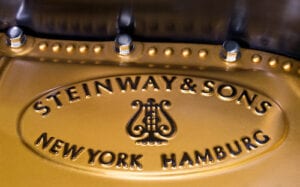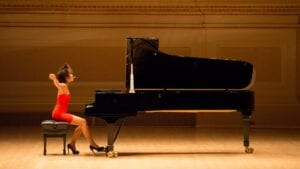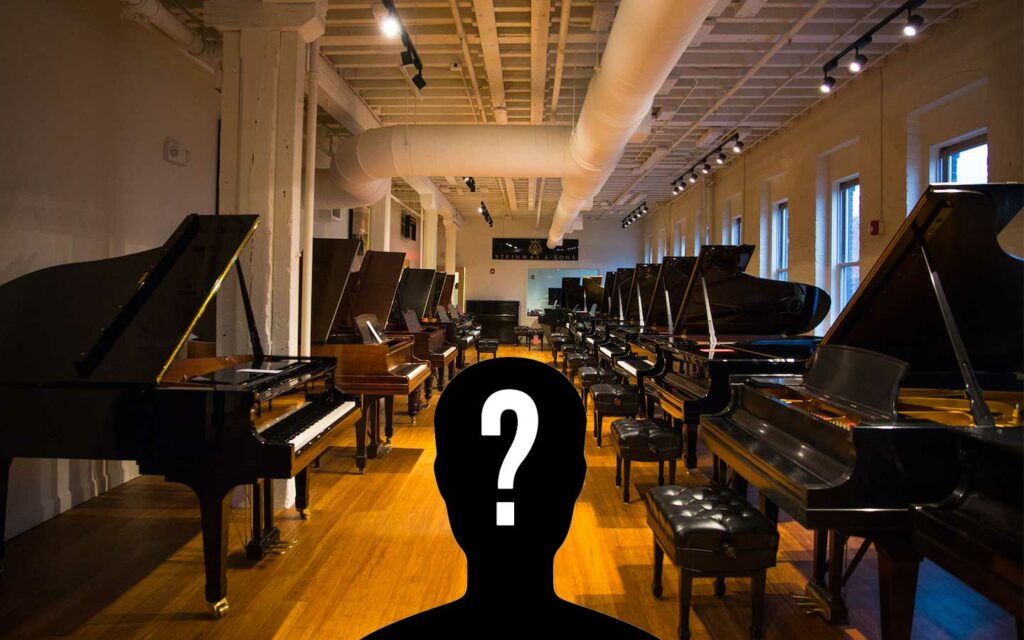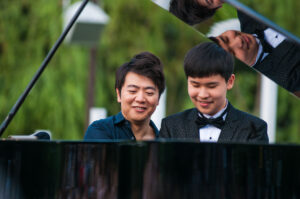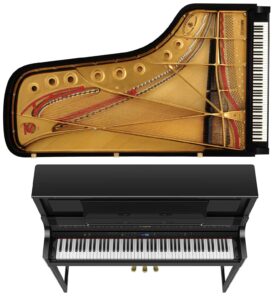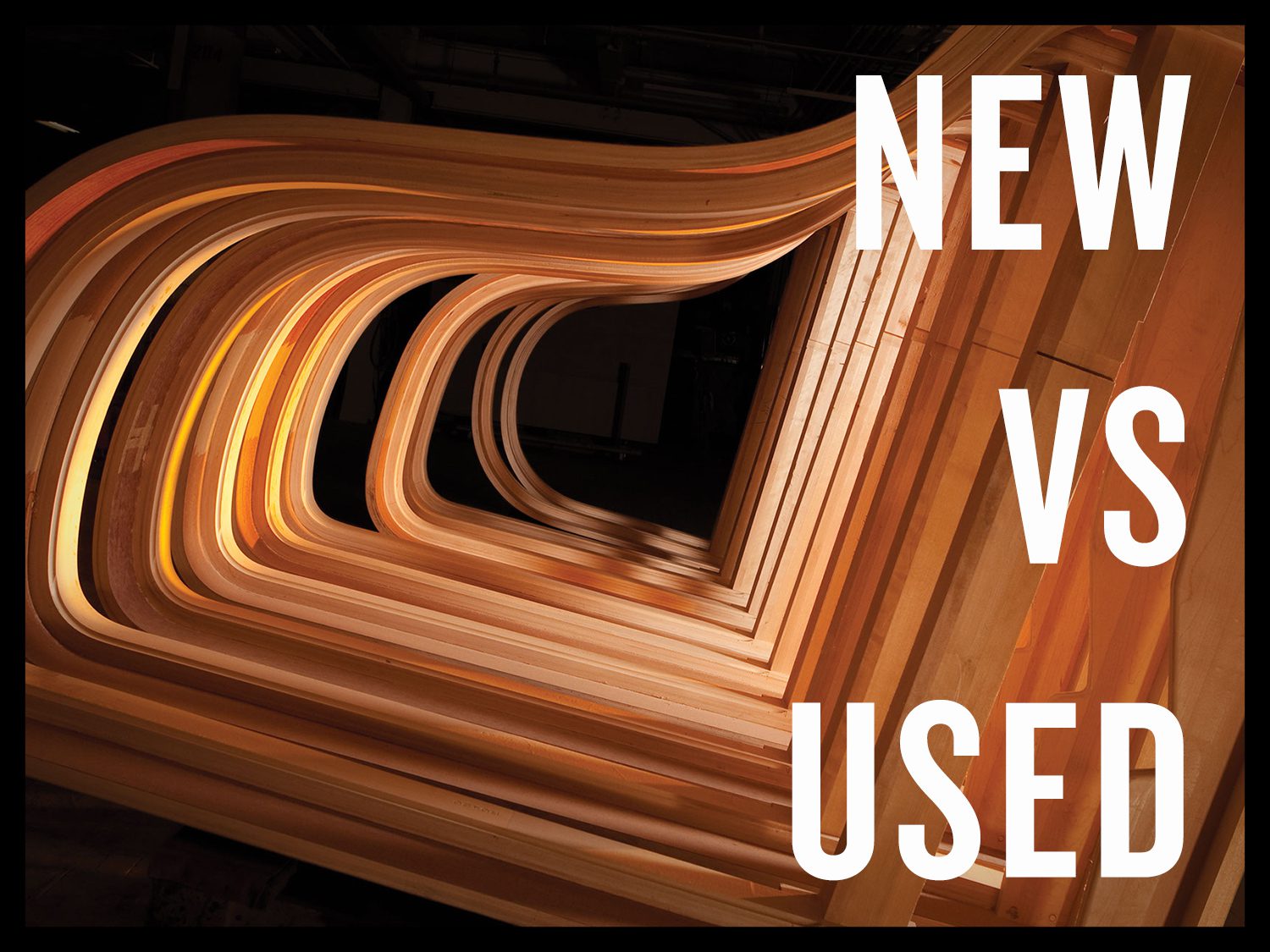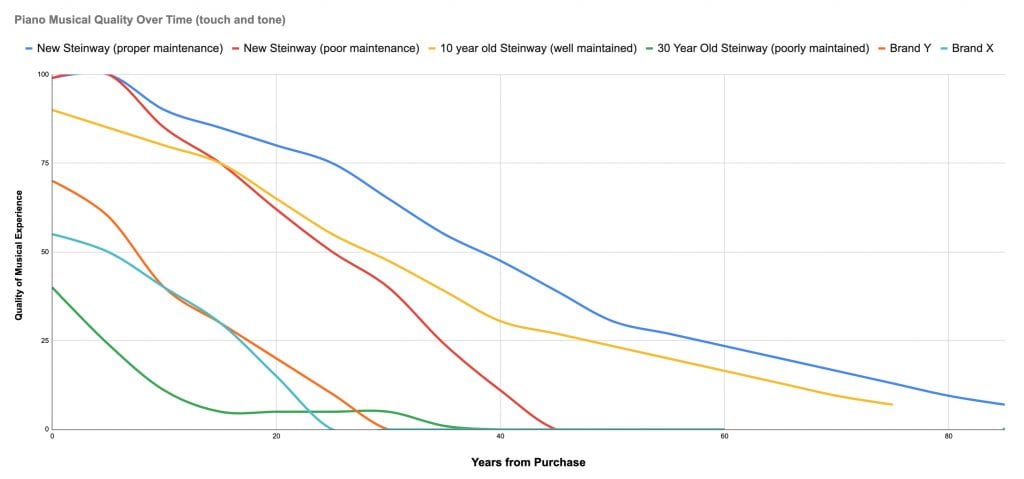New vs. used Steinway: Which is the better value for me?
by Stephen N. Reed
Veteran piano consultants at M. Steinert & Sons have seen too many potential customers ripped off by irresponsible used piano dealers who offered non-certified, used Steinways.
Told that the used pianos were from a “Golden Age” of Steinways (an age that is often vaguely dated sometime in the past), the buyer is attracted both by the lower price and the novel notion that their used Steinway is somehow better than a newer, more expensive one.
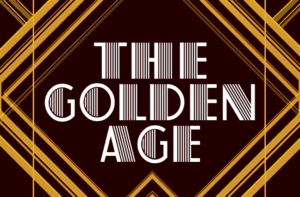
Despite occasional rumors, there was no “Golden Age” for Steinway pianos. Their engineering and craftsmanship get better each year.
“The truth is, there was no “Golden Age,” when the wood and craftsmanship going into a Steinway were better than today’s newer model,” says Phil Schoonmaker, who has been selling Steinways for M. Steinert & Sons for four decades.
“Each generation of Steinways was good, but time takes its toll, even on Steinways,” notes Phil. “If the customers don’t know this, they are susceptible to an unscrupulous salesperson’s skills.”
Clearly, potential piano buyers owe it to themselves to learn about the difference between a used and new Steinway and also between two used Steinways. Steinert & Sons will only certify used pianos less than 30 years of age.
But according to Phil, if one can afford it, the new Steinway is always the better route. The fact that you’re getting the most state-of-the-art Steinway & Sons’ piano from their world class engineers and craftspeople is the key.
Phil also notes that concert pianists, who make their living as professional musicians, want the newest version. Because they make their livelihood playing the piano and want to sound their best, the vast majority of concert pianists prefer to play a new Steinway.
Let’s take a look at some of the pros and cons of both new and used Steinways.
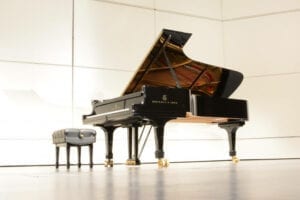
New Steinway
A new Steinway represents the latest, state-of-the-art version of the Steinway & Sons piano.
Pros of a New Steinway Piano:
- Selection: Pick size, model, and preferred sound/touch
- There’s no question about its past. It’s got its full life ahead of it
- Manufacturer Warranty Support
- The only pianos with Spirio option
- New Diamondgloss finish is standard
- Many factory improvements have been made in the past ten years, making modern Steinways much better and more consistent than old ones
Cons of a New Steinway:
- It costs more, at least in the beginning
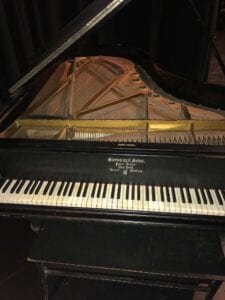
Used Steinway
A Used Steinway can have good value but only if it is certified by an official Steinway & Sons distributor.
Pros of Used Steinway:
- It still says Steinway on it
- It costs less in the beginning
- If less than 10 years old, it may have significant life remaining
Cons of Used Steinway:
- Depending upon age – missing key Steinway patents/innovations that yielded the Steinway reputation
- Not knowing about the nature and quality of work done over time
- Who did the maintenance/work?
- Was a restoration done, what exactly did they do, and where did they get the parts?
- Are they authentic Steinway parts? (Note: ONLY Steinway installs Steinway soundboards and pinblocks).
- A potential unknown number of owners/users
- Lack of credible warranty support
- The price is still going to be quite high, and it’s a much riskier purchase overall than a new one
How to Choose Between a New and Used Steinway Piano
Spending ten to forty thousand dollars for any used piano is a lot of money and yields considerable uncertainty. So if buying a new Steinway is financially possible for you, it’s almost always worth the peace of mind in the long run.
A used piano is tempting, but you need to get to know the piano very well before making any investment. Plus, if it isn’t certified, to the buyer beware.
A Used Steinway typically fits those who:
- Have a budget of $30,000-$90,000
- Just want the name Steinway
- Have a skilled and trusted technician to help evaluate options
- Prepared to invest in required maintenance and deal with hassles of older pianos
A New Steinway works well if you:
- Can allocate $80,100 or more to a grand piano purchase
- Want the recognized Best in Class piano
- Demand all the latest improvements from Steinway and the new high-polish DiamondGloss finish
- Prefer manufacturer warranty support

Whenever possible, a new Steinway is best
In the end, a used Steinway can have value if its certified and in good condition. However, in terms of quality and lifespan, a new Steinway piano is always the best deal.
“The ongoing research and development, along with the best materials and craftsmanship that makes each new Steinway a masterpiece can’t be underestimated,” says Phil. “The used piano dealer who tells you otherwise is telling on himself.”
Read more about M. Steinert & Sons’ current selection of New and Used Steinways.


